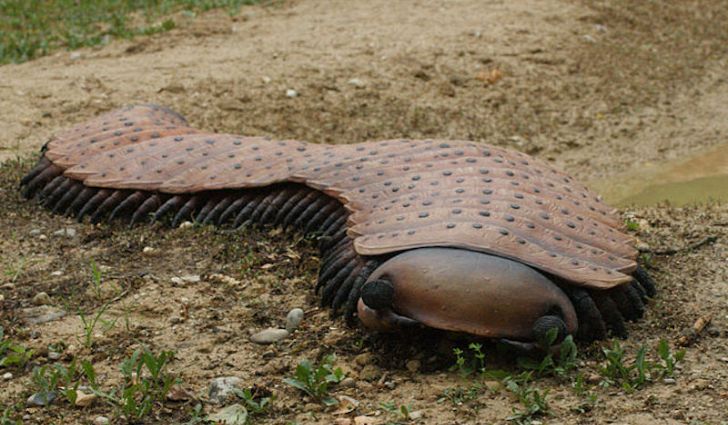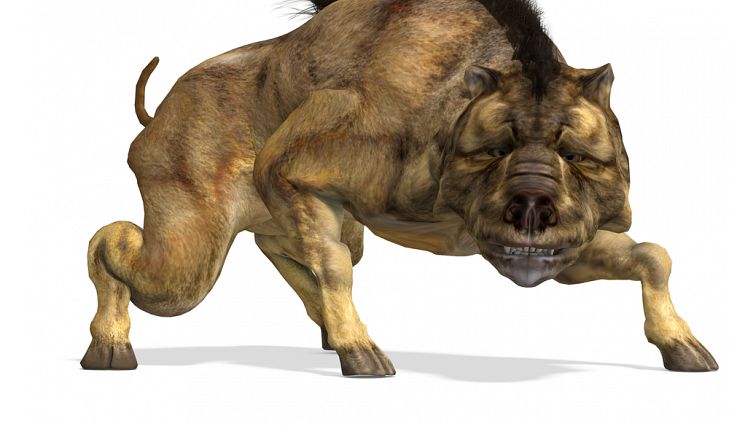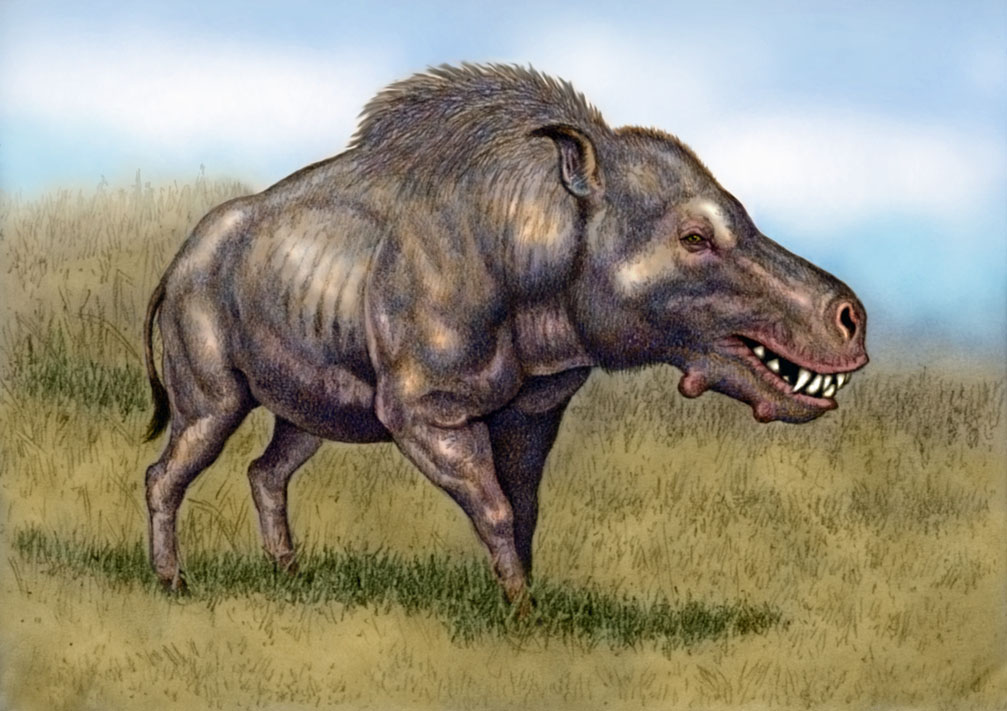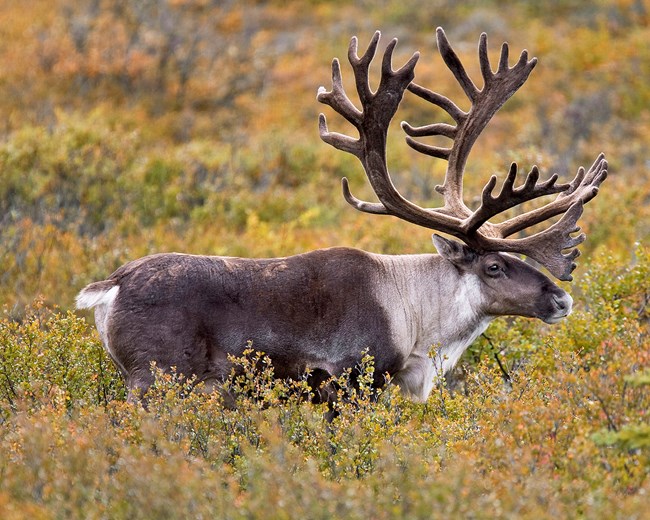Anthropleura

Arthropleura is considered as the ancestors of centipedes and millipedes. With more than 8 feet long and several feet wide they were great predators even when they don’t have a vertebrate. Not even that it was also the largest known invertebrate species this planet has ever seen. They lived between the Carboniferous Period to early Permian Period which was some 300 million years ago.
Living In Plain Sight

Arthropleura lived in the areas of present-day North America and Scotland. Despite being so huge in size they were pure herbivorous. Due to so many limbs, it moved very swiftly and quickly avoiding obstacles like trees, stones, and rocks. Because of the speed that they got from 30 jointed segments they were able to hide from their attackers.
Daeodon

Looking Daeodon in this picture might make you laugh but it this animal lived here in North America some 29 million years ago. They are a genus of entelodont artiodactyls. They were scattered all over the United States but they were very less in numbers. Their population wasn’t very high and it was this factor that with time they couldn’t survive the change and were extinct from this planet.
Powerful Daeodon

Lived between the end of Oligocene and early Miocene epochs. According to scientists, an adult Daedon had a skull which was about 3 feet in size. Their slender limbs and forelimbs fused together to give them the shape you see here in this picture. As you can see they had only two toes on each foot. Muscular and heavy neck made them a good powerful predator.
